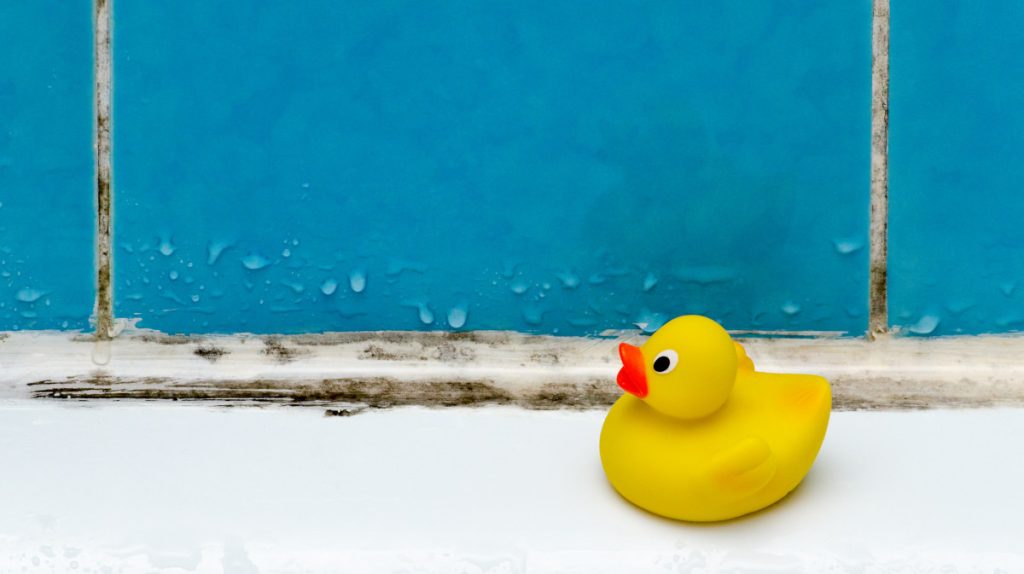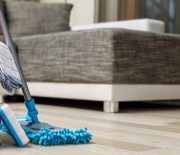
Have you ever noticed the sly presence of condensation seeping into your bathroom, particularly in the midst of frosty winter days? It’s like a stealthy intruder, isn’t it? In households, showers and baths expel approximately 1.7 litres of water into the surrounding air. Over time, this humidity accumulates on various surfaces like windows, ceilings, and walls, contributing significantly to condensation problems. Startling research findings have shown that over 73 per cent of individuals living in their own homes discover the presence of mould in their bathrooms, underscoring the pervasiveness of this concern.
In this article:
Understanding bathroom condensation
When warm, moist air encounters cold surfaces, condensation occurs. It loves finding its place in bathrooms and kitchens, where temperature differentials are most pronounced. Probably, you can often notice droplets forming on surfaces such as mirrors and windows – a classic sign of condensation at play. Additionally, you can keep an eye out for fogged-up mirrors, damp walls, and musty odours. They indicate the presence of excess moisture in the environment. Whether it turns into a problem entirely depends on how you treat it.
What are causes of bathrooms condensation? This is the most common question. There are many reasons why you would see excessive condensation in the bathroom, but the main reasons are:
- Having a hot shower on a cold winter day.
- Relaxing in a steamy, hot bath.
- Washing your face or hand with hot water.
- Drying clothes on a heated towel rail.
- Not wiping up after taking a shower.
Believe it or not, bathrooms can serve as breeding grounds for condensation. These spaces have elements like chilly walls, windows, and ceilings that are particularly prone to condensation buildup. The excess moisture is what causes mould. Adding the fact that warm air holds more moisture than cold, it will just enhance the problem. Even taking a quick shower might seem harmless to you, but it is not. If the bathroom can’t dry out properly, mould grows, despite nobody wanting that.
While small amounts of mould are safe, prolonged exposure to it can aggregate respiratory and skin conditions. Here are a few examples:
- Respiratory problems – Mould in indoor spaces is a known trigger for respiratory issues like asthma, bronchitis, and allergies. It can release tiny spores that irritate your airways, making it tough to breathe.
- Infections – Mould exposure can weaken immunity, increasing vulnerability to infections. Individuals with compromised immune systems, like the elderly or those suffering from long-term illnesses, are especially susceptible.
- Skin irritation – Mould and moisture can cause skin irritation and rashes. They affect the pH balance of the skin, causing dryness, itching, and redness.
- Mental health problems – Living in a mouldy and wet environment can also have an impact on your mental health, leading to mood disorders such as anxiety and depression.
- Allergic reactions – Mould allergies can cause symptoms like runny noses, itchy eyes, and sneezing in certain people.
To combat the challenges of condensation and preventing mould growth, proactive measures are needed. That’s why addressing those issues should be done fast to minimise the risk of these health problems.
Having trouble with mould?
Get a thorough cleaning for a healthier life!
How to reduce moisture in bathroom
If you wonder how you can stop bathroom condensation from forming, the short answer is that you can’t. The nature of all bathrooms means that some condensation is inevitable and can’t be totally avoided. What you can do is reduce it so that your mirrors and windows don’t get as misted, and you cut down the risk of mould.
Ventilation solutions
Improving bathroom ventilation is among the most effective methods on how to stop condensation running down walls and how to get rid of mould. Moist air from baths or showers tends to move around your home, potentially leading to more condensation problems. A properly ventilated bathroom helps keep this moist air contained, reducing the amount of moist air circulating within the rest of your property.
To further improve airflow in the bathroom and prevent condensation buildup, you can:
Open windows
Even though opening a window might not be your first thought on a chilly winter morning shower, it’s a simple trick to let extra moisture and steam out. It will naturally dehumidify the bathroom, preventing it from lingering in the air and settling on surfaces throughout the room.
You can also try cross-ventilating your entire home. Simply open windows windows on different sides of your house to invite fresh air in. It’s a super easy yet super effective way to keep your home feeling fresh and condensation-free.
Have a gap in the door frame
You might find it surprising, but leaving a tiny gap of around an inch can actually help air flow better, especially if the next room gets some natural breeze. It’s not a perfect fix, but hey, it could do the trick! This gentle breeze can stop your bathroom from feeling like a sauna of steam and condensation.
Install a high-quality exhaust fan
You may not have control over the weather, but you can take some simple steps to reduce condensation in the bathroom. Utilising an extractor fan offers an effective solution to combat condensation, particularly in bathrooms lacking proper ventilation from windows. It is designed to be used in areas that suffer from damp and mould. Definitely consider installing a fan if there’s not one already. It pulls the humid air out of the bathroom and expels it outside. Installing a high-quality exhaust fan is an effective method for treating condensation on walls.
There is no “one size fits all” in exhaust fans. You should choose the right size for your room to have proper operation and effective ventilation of unwanted moisture. Exhaust fan capacity is expressed in m3 per hour in Australia. The fan has an hourly maximum that it can move this much air. To find the perfect exhaust fan, determining the dimensions of the area (length x width x height in meters) and the desired frequency of air changes per hour is key. The time required for a complete air exchange in a room within an hour varies based on its utilisation. A bathroom with a shower, for instance, usually needs 15–25 air changes per hour, whereas a separate toilet only needs 6–15 air changes per hour.
There are two main types of mechanical extract ventilation (MEV) systems: intermittent and continuous. Intermittent MEV uses a timer to turn on for 20-30 minutes every hour, while continuous MEV works without stopping, constantly drawing in fresh air and expelling stale air.
Keep the extractor fan running before and during showers and for half an hour after for better ventilation. You can also consider upgrading to a fan with a humidity sensor for automatic operation. The best place to locate it is directly above the existing shower cubicle. That way, it would detect the humidity quickly and remove the water vapour directly from the source rather than pulling it across the entire bathroom.
The fans in your home are quietly doing their job but slowly accumulate dust and dirt over time. Regular cleaning is crucial to maintain exhaust fan efficiency. A simple vacuuming followed by a wipe-down with warm, soapy water can work wonders. Just remember to check the manufacturer’s guidelines before diving in.
Use a dehumidifier
If you’re dealing with a major condensation problem and your bathroom lacks windows, a high-quality dehumidifier might be the perfect solution. This handy device works by pulling moisture from the air and storing it as water. Simply pop it on during or after your shower or bath, and voila! It will effectively reduce condensation on walls in the winter, providing a solution for how to stop condensation on walls and ceilings. It’s a game-changer for keeping your bathroom nice and dry.
Temperature regulation techniques
Dealing with condensation in the bathroom can feel like a daily struggle, especially when faced with fluctuating temperatures during chilly mornings or steamy showers. The culprit? Fluctuating temperatures within this small space can lead to a buildup of moisture on surfaces, creating the perfect environment for mould and mildew to thrive. However, maintaining an even temperature in the bathroom isn’t just about comfort—it’s a critical strategy for keeping condensation levels at bay. Check these various techniques on how to maintain even temperature in the bathroom.
Insulating pipes
Insulating pipes in the bathroom is a simple yet effective way to reduce condensation. When hot water pipes run through cooler areas, they can cause moisture buildup, leading to dampness and mould growth. By insulating pipes, you create a barrier that helps prevent the transfer of heat from the water to the surrounding air. This insulation keeps the pipes warmer, reducing the likelihood of condensation forming on their surfaces. Additionally, insulating pipes can help conserve energy by minimising heat loss from the hot water as it travels through your plumbing system. Installing vapour barriers on pipes is a great insulation technique. It will minimise the transmission of moisture from the air to the pipe surface.
Sealing leaks and gaps
Inspect plumbing fixtures, faucets, and pipes for leaks and fix any issues promptly. This will definitely help reduce air movement and condensation. Seal off any gaps surrounding windows, doors, and vents to thwart the entry of external moisture into the bathroom space. Keep an eye out for grout lines where tiles meet, as these can deteriorate over time and allow moisture to enter.
Investing in underfloor heating
Cold surfaces like ceramic floor tiles and wall tiles attract condensation. To combat this, maintaining a warm bathroom environment is crucial. Placing underfloor heating can help with this issue. Additionally, upgrading to double-glazed windows from single-glazed ones can help minimise condensation by reducing surface temperature differentials.
Ensuring windows are double-glazed
A small amount of condensation is usually nothing to worry about. However, excessive condensation may be more of a concern. Double glazing helps retain much more heat than single glazing which will warm up those colder surfaces that are likely to attract condensation. They are a wonderful long-term solution.
Implying heated towel rails
Utilising heated towel rails benefits your bathroom in various ways, such as keeping the temperature higher and raising the wall and window temperatures above condensation thresholds. Heated towel rails offer an efficient means of heating the bathroom, although it’s essential to ensure they remain free from damp towels.
Installing electric mirror heaters/pads
Whether you’re preparing in front of the mirror or looking to freshen up after a shower, dealing with mirror condensation can be quite bothersome. However, electric mirror heaters offer an ideal solution by using a heated backing to ensure your mirror stays crystal clear even after a steamy shower.
How does it work? It consists of a thin heating element, so it’s easy to install. The electrician simply applies the pad as backing before the mirror is mounted to the wall. The mirror heat pad can be fitted to most sizes of mirrors and is linked to a standard on/off switch. It will generally heat to around 30 degrees, which is hot enough to eliminate surface condensation but not too hot!
Heating the bathroom
As condensation needs a cool surface to form, heated bathrooms are less likely to have condensation issues. Keep the temperature above 16 Celsius at all times, and this will help prevent condensation from forming on the outside walls. The surfaces won’t be as cold and so less likely to attract water vapour. Just turn up the thermostat a few degrees to warm the air in the bathroom. You can even use a hairdryer as a last resort. It works well for de-misting mirrors, so you can use it to do your hair and make-up.
Installing a low-flow showerhead
By installing a low-flow showerhead, you can significantly decrease bathroom condensation problems. These innovative fixtures reduce the amount of steam while showing. That way, a more comfortable and moisture-controlled bathroom environment is created.
Smart shower habits
As well as being annoying to contend with, the effects of ongoing condensation in your bathroom can become damaging if left unchecked. Incorporate these small but smart shower habits to reduce the condensation in bathroom:
Limit shower time and temperature
A cheaper and simpler approach to combat bathroom condensation is adopting efficient shower routines by limiting shower time and reducing water temperatures. Even if you remain a big fan of hot showers, try stepping out a few minutes earlier and reduce the humidity that way. That way, less steam is produced. This simple change can get your bathroom condensation under control, creating a more comfortable bathroom environment while also conserving energy.
Wipe down surfaces
Keeping surfaces dry in the bathroom is key to reducing moisture and preventing mould growth. After every shower or bath, make it a habit to wipe down cold surfaces such as shower walls, bathtubs, and countertops with a towel to get rid of any lingering moisture. This is an essential step in knowing how to reduce moisture in bathroom effectively. Don’t forget to use a squeegee or towel to dry off shower doors and curtains to avoid water buildup.
Avoid leaving damp items in the bathroom
Avoid leaving damp items in the bathroom to minimise moisture production. Wet towels scattered on the bathroom floor not only look messy but also contribute to increased condensation. Instead, opt to hang towels up to air dry naturally after use. This simple step not only reduces the risk of mould growth but also helps eliminate any lingering musty odours.
Waterproof materials
When it comes to handling bathroom condensation, waterproof materials are your best ally. They repel moisture so your bathroom stays dry. Whether it’s tiles, flooring, or wall coverings, these waterproof materials provide both longevity and a stylish appeal to your bathroom. Let’s check the array of waterproof materials that effectively combat condensation in your bathroom.
Waterproof paint
When condensation appears on the bathroom ceiling and walls following a shower, specialised paints are available that can effectively absorb moisture. These water-based paints draw thermal energy to heat bathroom surfaces, delaying condensation formation by up to 60%. Additionally, some have anti-mould ingredients preventing the growth of mould for up to five years.
Waterproof tiles and grout
Why hassle with paints when you can opt for waterproof tiles to combat condensation in your bathroom? They are easily found and come in a variety of styles so that you can create a functional and stylish bathroom. Say goodbye to damp walls and hello to a more beautiful bathroom.
Moisture-resistant drywall or wall panels
Integrating moisture-resistant drywall or wall panels into your bathroom design is a proactive approach to tackling condensation effectively. These specialised materials provide insulation that helps maintain a consistent temperature in the bathroom. That way condensation buildup is very reduced, especially in colder climates. Additionally, proper insulation not only helps reduce condensation but also enhances energy efficiency, potentially leading to lower heating bills during winter. Consider installing bacteria-reducing wall panels which claim to reduce bacteria buildup by up to 99.9%.
Thermal liners
Another thing that you could put on a cold wall to stop condensation is thermal liners. They are made from a specialised material that helps to create a thermal barrier between warmer air inside the room and the wall’s surface. This prevents the warm, humid air from coming into contact with the cold wall surface. Additionally, it contributes to a healthier indoor environment. If you’re wondering how to remove moisture from bathroom walls, consider installing thermal liners as part of your moisture management strategy.
Anti-fog spray
A wise trick could be applying an anti-fog spray on mirrors and glass surfaces. These mists create a thin layer that deters moisture from sticking to the surface by repelling water. This is very helpful during the colder months when condensation is more likely to form. The anti-fog spray can be a convenient and long-lasting solution, so give it a try.
Dehumidifying plants
Introducing dehumidifying plants into your bathroom can be a game-changer. They can naturally absorb moisture in bathroom, maintaining the optimal moisture levels in the air. Species like spider plants, Boston ferns, and golden ponsoes are very easy to care for. Besides, they thrive in humid conditions, making them perfect choices for bathroom environments. For instance, the Peace Lily. It is one of the best houseplants that you can buy. It originates in tropical rainforests. The leaves of the plant will help absorb moisture in the air while it grows, stopping condensation in its tracks. Furthermore, since it can absorb moisture, there is no need to worry about watering it.
Takeaways
- Learn how hot, humid air leads to moisture buildup on surfaces, fostering mould growth and posing health risks.
- Implement and constantly apply ventilation improvements, moisture reduction techniques, and insulation to combat condensation and mould effectively.
- Start making changes today to achieve a fog-free, clean, and healthy bathroom.
Do you need a helping hand?
Hire a professional cleaning team!








